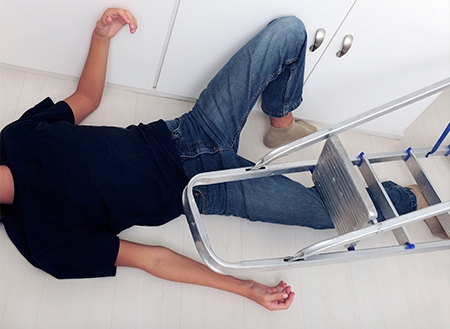At Orthopaedic Associates of Wisconsin, we see injuries sustained during a slip and fall every single day. Whether it be due to this lovely Wisconsin weather, an episode of low blood pressure, or even just generalized weakness and instability in the legs, falls can be terribly detrimental to one’s overall health. Particularly as we age, fractures sustained during a fall can have long-term repercussions. Patients at higher risk of sustaining a fracture upon falling are the elderly population (more so woman beyond menopause), those with osteoporosis, smokers, and people on long-term steroids. Though fractures are relatively routine in orthopedic medicine, they have the potential to be life-altering depending on the severity.
Hip fractures are one of the most common fractures sustained by the elderly population. Patients who sustain these fractures often report severe pain and significant dysfunction in the affected leg and most often report to the Emergency Room for evaluation. Hip fractures in the elderly population are often treated surgically (unless the patient is deemed unfit for general anesthesia) to allow patients to walk again as quickly as possible. Research shows that surgically fixating the fracture does lower the mortality rate over the course of the first year. However, even with surgical management, the mortality rate is estimated to be 18-31% within the first year following the injury per an article published by the National Library of Medicine in September of 2022. Post-operative complications such as blood clots and infections contribute to these numbers. This same article states only 40-60% of patients experience restoration of their previous mobility. These numbers are not meant to scare patients, but rather encourage them to take precautions.
It is because of our diminishing ability to heal combined with the gradual decline of our general health as we age that mitigating the risk of falling is important. This can be as simple as not running errands in inclement weather. Perhaps an ambulatory aid such as a cane, walker, or wheelchair is warranted. Sometimes, physical therapy is ordered to help patients improve their overall balance. The physical therapist may also work on gait training to help someone walk in a way that keeps them upright. Some patients may make changes to their homes to include additional handrails, shower chairs, or removal of rugs and other trip hazards to keep their day-to-day activities safe.
Whatever your age, minimizing your risk of falling to prevent injury is important. If you have fallen and sustained an injury or if you feel you have orthopedic issues putting you at an increased risk of falling, call our office to schedule a consultation with one of our specialists.
Emmerson, Benjamin R., Varacallo, Matthew, Inman, Dominic (2022). Hip Fracture Overview. National Library of Medicine. Hip Fracture Overview - StatPearls - NCBI Bookshelf (nih.gov).
This blog is written by one of our very own-Morgan. She is a certified athletic trainer working in our clinic with our providers each and every day. She obtained a bachelor’s degree in athletic training from Carroll University in Waukesha and a master’s degree in Kinesiology from Michigan State University.

